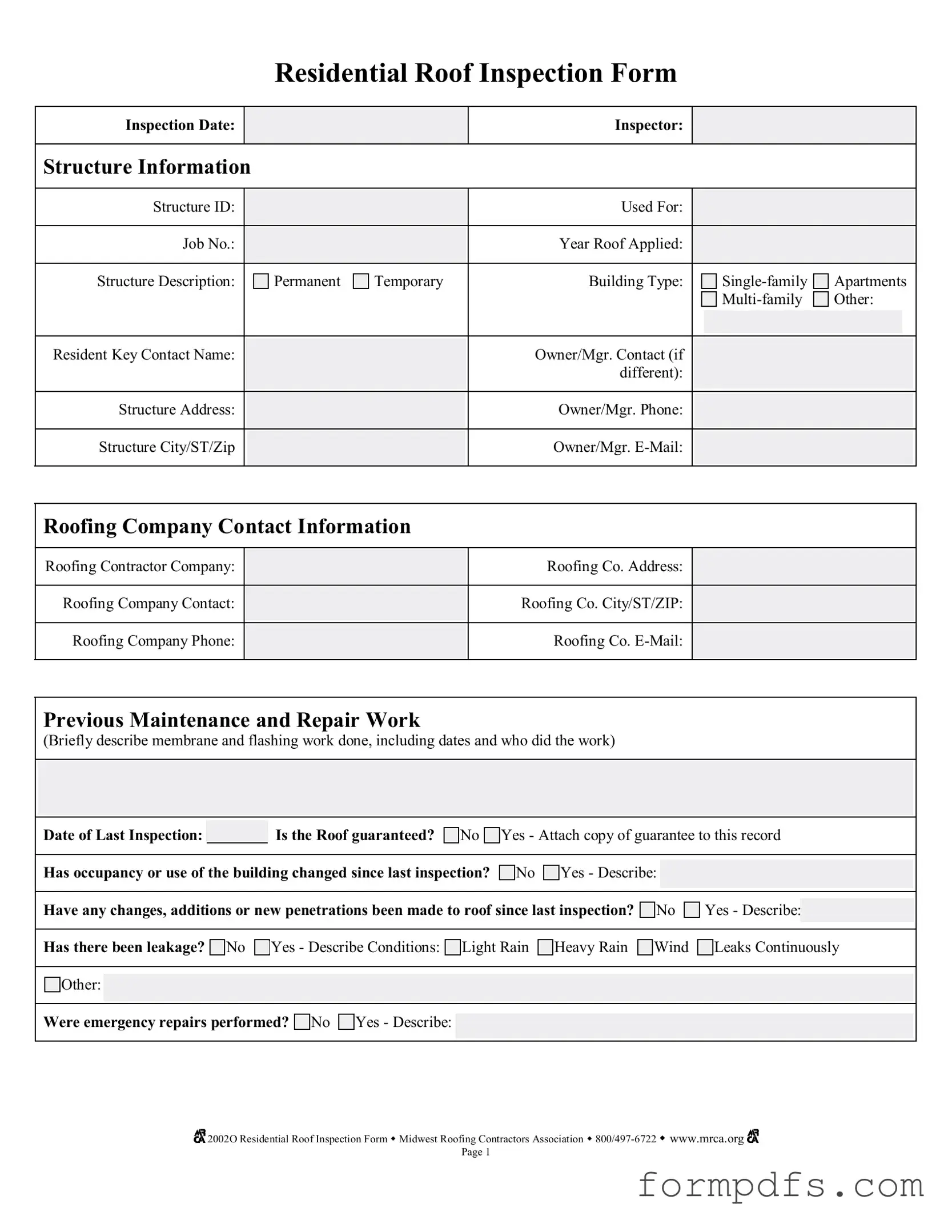What information is required on the Roof Inspection Form?
The Roof Inspection Form requires several key details, including the inspection date, inspector's name, structure information such as ID and description, and contact details for the owner or manager. Additionally, roofing company information, previous maintenance and repair work, and details about any changes or issues since the last inspection must be included.
How should I describe previous maintenance and repair work?
When detailing previous maintenance and repair work, provide a brief description of the membrane and flashing work completed. Include the dates of the work and the names of those who performed it. This information is crucial for understanding the roof's maintenance history.
What does the condition coding (G, F, P) mean?
The condition coding system uses three designations: G for Good, indicating no action is needed; F for Fair, suggesting periodic monitoring; and P for Poor, which signals the need for immediate action. Each area of the roof should be assessed and marked accordingly.
What should I do if there has been leakage?
If leakage has occurred, describe the conditions under which it happened, such as light rain or heavy wind. Include specific details about the location and nature of the leaks. This information helps identify potential problem areas that need immediate attention.
Is a copy of the roof guarantee required?
If the roof is guaranteed, a copy of the guarantee must be attached to the inspection record. This documentation is essential for future reference and ensures that any warranty claims can be processed efficiently.
What should be included in the photographic record?
The photographic record should include film or digital photographs and any video documentation of the roof's condition. This evidence supports the findings in the inspection form and should be kept with the Roof Historical Record for future reference.
What if the occupancy or use of the building has changed?
If there have been changes in occupancy or use since the last inspection, describe these changes in detail. Understanding how the building is used can impact the roof's condition and maintenance needs.
